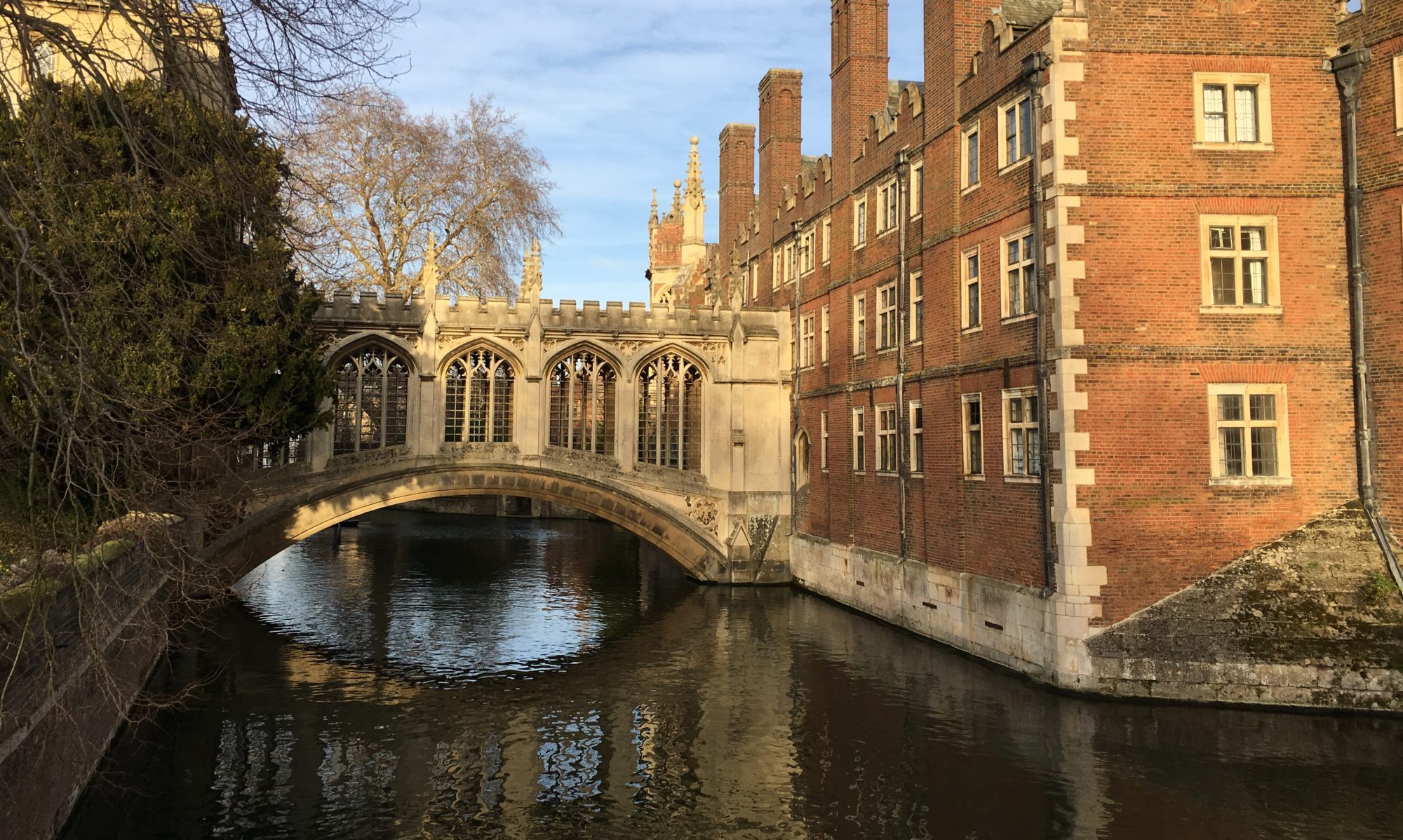A few days ago in a window of benevolent weather, my flatmate and I went to see the sunrise over Cambridge from the highest ground in the city: Castle Mound. Not being habitual early risers, we underestimated how early the colors actually begin to paint the sky before the sun is scheduled to show itself. At 7:30 a.m. at the end of January in Cambridge, 20 minutes before sunrise, the day has already eased itself in, and the pink has fanned out through the clouds. We cycled hastily under the luminous sky, sneaking glances at the risk of swerving. At this time of day during a pandemic, there were only a few other cyclists and small accumulations of cars at stoplights. We could ease through the awkward roundabout at Madingley Road and Northampton Street with no problem, chug up Castle Street, lock our bikes and cross traffic-free to the small green hill tucked behind city buildings. I left my winded flatmate behind to hurry up the curving steps and catch the sun.
I got to the top of Castle Mound just as the sun was edging vivid and red over the pale rise of earth beyond the city, a deity among wind turbines. Streamers of color still trailed over the spires and bare trees and construction cranes of Cambridge, though fast softening into blue. Opposite the sun, a full moon hung calmly among the clouds.
There’s no castle on Castle Mound or anywhere on Castle Street, but there was once—actually, multiple times. Cambridge, like surrounding East Anglia, is very flat, except for Castle Hill rising over the River Cam. So this was the place for fortification. From what I could gather via the weathered interpretive sign, this pile of earth topping the larger rise of Castle Hill is all that remains of Iron Age settlement, Roman fort, medieval motte (the mound itself) and bailey built by order of William the Conqueror, stone castle built by Edward I and dismantled by Elizabeth I to sell the stone to Cambridge colleges (Magdalene and Emmanuel, as well as Great St. Mary’s Church), Oliver Cromwell’s civil war bastions, and finally, when military exploits gave way to administrative, the County court and gaol. Now—and I suppose ever since the stately Shire Hall across the green replaced the county buildings in the 1930s—this mound is historical curiosity, semi-panoramic viewpoint, romantic spot, miniature grassland reserve, and both punishment and reward for joggers at the end of the long push up Castle Hill.

And it’s a place to see to the edge of Cambridge, where the sun can rise unimpeded. The core of the city itself is too close to the hill to see much past the trees and nearby roofs, but looking east, the iconic skyline makes itself known. South from the sun: tall narrow steeple of All Saint’s Church by Jesus Green, four-pronged St. Johns College Chapel tower, crenellated Great Saint Mary’s Church tower, and King’s College Chapel with its row of spikes; between them, the jumble of stone, brick, concrete, and roof tile that make up the current iteration of Cambridge.
On the one hand, we have the miracle of seeing from Castle Hill, still, what Oliver Cromwell and his compatriots would have seen from their ramparts—King’s College, Great St. Mary’s still in their places. On the other hand, this is only the faintest topography of what they would have seen, broken and rebroken and smothered in new layers.
Within a few minutes, the sun was fully awake and free of the horizon. We coasted down Castle Hill and cycled back through City Centre to admire up close the new sun gilding old castle-college stone and to revel in the quiet that still reigned peach and blue over the cobbles.











Fascinating history! Having landmarks like that also helps you get your bearings in what might otherwise be a disorientingly flat landscape.
True!
I do marvel at your photography. And that you’re out of your flat during Covid. Thanks for sharing.
Thanks! Ha, the outdoors is fair game and much needed!
I love knowing the history of the stone for Great St. Mary’s and other well-known locations there. I had no idea!
Isn’t it cool??
Now David and I know what a motte and bailey are! Not to mention we looked up the pronunciation of gaol, which turned out to be
“jail,” only spelled way cooler. Thanks for the historical tour!
My pleasure!
Thank you Anne! If I were a publisher I’d have that out in a day! So beautifully written; I enjoyed it very much. It’s exciting to see your surroundings!
Thank you!